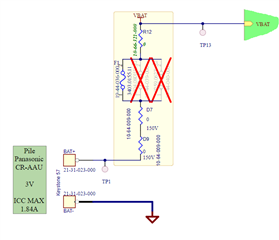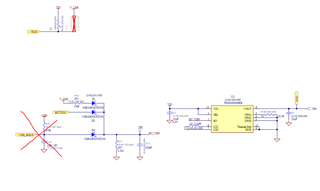Tool/software:
Hi,
I encountered problems with the TPS63900 on our PCBs. I have a fuse of 15 Ohm mounted between the battery and the input of the IC. When I put a load on the output, I have huge voltage drop making the output first fixed at 3V useless, it's going down to 1.3V.
I also have the EVM module to test the IC to test current limitation and it kinda worked, but with bigger load it can't supply the 3V output.
I also made tests without fuse, and it worked correctly. And with another fuse with lower impedance, 8 Ohm, it worked better (with bigger load), but not completetly.
If you could help me understanding the behaviour of the TPS63900 I would be more than grateful. Thanks



